



|
 |
 |
Macedonia Travel Guides |
|
Post Reply 
|
Page <1 78910> |
| Author | |||
Max 
Senior Member 

Joined: 07-Jun-2009 Online Status: Offline Posts: 3686 |
 Quote Quote  Reply
#161 Posted: 06-Jun-2012 at 23:00 Reply
#161 Posted: 06-Jun-2012 at 23:00 |
||
|
for the wingless tourists there is miraculuous comfort through bird watching accros the country! Macedonia is abundant with birds [1][2][3][4][5] and bird watching is becoming more popular tourist attraction, that is mostly organised by BSPSM or local operators mostly on Prespa and Tikvesh Lake where are located the largest strict natural reserves [1][2][3] or alternatively can be part of european and national projects for birds studying with MES, although there is always good organized but expensive multi-country birdwatching [1], and in the end if this looks too complicated, there is always casual way to enjoy in birds medley, particularly on the shores of lake Ohrid where can be seen white gulls, sometimes rose gulls, pelicans, cormorants, swans, gooses, ducks... in this area fascination with birds and flying is old as time, birds are depicted on figurines from neolith till nowadays, e.g. the one found in village Porodin near Bitola 6.500BC [1] or Icarus from Ohrid 200BC [1], later in middle ages this practice is characteristic for church frescoes, icons and carvings, or through traditional songs [1][2][3], lately on money and stamps [1][2][3] and maybe tomorrow as Winged Lion (not griffin) on our coa-emblem, because the Falcon along with the Lion are considered traditionally as macedonian symbols... this connection except with figurines, zography and songs, is also acclaimed by the Macedonian male names, from antiquity as Hierax and today as Sokol, that are native names for Falcon... also this could be compromise for Macedonian Albanians which symbol is eagle, thus symbolically finding common ground instead difference... in past centuries it was popular believe that the eagle as symbol is also our tradition recognized through byzantine two-headed eagle motifs, that can be mostly found on church emblems, but falsely accepted this is dualistic emblem of the komnenos dinasty from byzant, that even hadnt been substitution for the one-headed roman eagle, because after Constantine the Great recognized Christianity as state religion of newly founded east empire only the Cross was state symbol up until komnenos and palaiolog dynasties that accepted western heraldic practices. few centuries later after the byzant fall this symbol as royal stamp or allegiance to byzant tradion, was accepted by the orthodox church and further by balkan kings that had identified themselves as byzantine inheritors as it was e.g. Skenderbey, Karadjordjevich, Njegosh i.e. today Albania, Serbia, Crna Gora... nevertheless eagle is also native symbol and in antiquity was used as well as it was case with the falcon, but still in hunting hawk was main bird as it is today Edited by Max - 06-Sep-2014 at 23:17 |
|||
 |
|||
Max 
Senior Member 

Joined: 07-Jun-2009 Online Status: Offline Posts: 3686 |
 Quote Quote  Reply
#162 Posted: 05-Jun-2012 at 23:00 Reply
#162 Posted: 05-Jun-2012 at 23:00 |
||

best way to see Macedonia is by Paraglider, Hangglider or Glider, normaly in tandem til one meet the winds and place! Macedonia has dozen flying sites that are regular hosts of balkan, european or world cup's in paragliding... and although aerial sightseeing is available in all spatial regions [1], still best sites for this kind of exploration are regions of Pelagoniya[1][2][3] and Polog[1][2][3], and for most skilled maybe it would be challenge flyover between skopye and ohrid, only once hovered with paraglider by the pilot from the glider-link above... however, whatever site or approach is chosen always consult someone http://www.vfm.org.mk/en_clubs.html [1][2][3]... if not for flying, there is always room for Speedriding in our modest but unique ski resorts like Kopanki on Mount Pelister, Galichitsa and Golak, Smrdliva Voda on Mt. Kozuf, Stanich on Mt. Bushava, Mavrovo on Mt. Bistra, Ponikva on Mt. Osogovo or Popova Shapka on Mt. Shar, the last one with the famous downhill/super-g track Tseripashina with 800m vertical drop and 3,16km course length, where have been held for 40 years the FIS Sharplaninski Cup and where are located most profuse hiking routes in the country http://sharamountainguide.com.mk/en/ [1]... 
the Shar mountain is among highest in Macedonia and native place of the eponymous dog Sharplaninets [1][2][3][4][5][6][7] macedonian shepherd dog, today featured on 1 denar coins and 2011 post stamps, it was brought up in ancient times and it was Alexander's personal guard-dog known as Peritas, his favourite pet beside the horse Bucephal... also Shar mountain is considered as europe's most butterfly diversified place, incredibly populated with 147 butterfly species, even though bio-tour operators prefer easily reachable sites like mount Galichitsa Edited by Max - 23-Jul-2017 at 19:20 |
|||
 |
|||
Max 
Senior Member 

Joined: 07-Jun-2009 Online Status: Offline Posts: 3686 |
 Quote Quote  Reply
#163 Posted: 02-Jun-2012 at 22:14 Reply
#163 Posted: 02-Jun-2012 at 22:14 |
||

http://www.aqueductskopje.net/ these are The Remains of Skopski Aquaduct built in VI c. by Justinian I as water supply system for his hometown, that were in use til XVIII century... it is one of the three largest in western balkan [1], 10km in length, from which today after the world wars and '63 earthquake, remained only 400m for wandering visitors to scratch some dust for home blessing what actually its not rarely coz our Aquaduct is left as some forgotten tourist bastard its not animated even for skopyans to jay the day on coffee table normally they have the duct to hope on thus legal~wild~archeo~openair~joint for all (without tickets too) so try pull some acoustic instrument with You (or maybe You'll find it there) and try the flow and the breeze on that 400m memory of our local late antiquity I'll say coz erected by Tsars Will its more precious than any other You'll touch in this valley of eternal memories  In 1669 the traveler Dr. Brown has noted that the Aqueduct is a wonderful old object, which brings a great respect to Skopje, historians also quoted the famous chronic from the period of Justinian Procopius, who notes that it was build between 527-565 AD. In 1669 the traveler Dr. Brown has noted that the Aqueduct is a wonderful old object, which brings a great respect to Skopje, historians also quoted the famous chronic from the period of Justinian Procopius, who notes that it was build between 527-565 AD.
its worthy to be noted that sKo(no)pje was and still is blessed, with the one of the cleanest tap water in the country, that is drawn from the spring Rasche near mountain SCG north of the town, where is located the spring Lav(lion) in village Gluvo, which fresh water was supplied to old Scupi via the Aqueduct... in this village hade been found the first local mummified body, that recklessly had been left to decay, but as cold comfort there are few other found across the mounStain [1][2] that means it was popular place even in early antiquity, and its not coincidence that Justinian choose exactly this place for water supply, although there are more closest springs like Koritishte near the cave Vrelo in the cAnyon Matka, nevertheless it should be taken into consideration that both places, SCG and Matka, were considered as Holy in the middle ages, settled with over 30 Monasteries in each One, because of what it were broadly known as Small Mount Athos, though I am still in doubt if this epithet was for both, one of them or whole of Skopski Region, yep whole ...  so be clever dont act stupid when stroll around it can ping back causality pong that maybe You are not prepared to dealt with eg. ex'domesticated but now'wild wandering dogs to catch You for a thumb or an head!, by default case if karma mirroring hit the bell, even more cause we've put a lock on our Metropolitan Dog Residence for all strayed local dogs so now whole City is theirs freedom house that yeah can bite without warning if things get inbetween the lines ... so be clever dont act stupid when stroll around it can ping back causality pong that maybe You are not prepared to dealt with eg. ex'domesticated but now'wild wandering dogs to catch You for a thumb or an head!, by default case if karma mirroring hit the bell, even more cause we've put a lock on our Metropolitan Dog Residence for all strayed local dogs so now whole City is theirs freedom house that yeah can bite without warning if things get inbetween the lines ...
so unlike today, in Antiquity supplying Mountain Water to dowNtowN was quite original, as in metaphysical so as in its physical approach, except maybe the bottling in glass that was and still is common not so unique thing!, still in modern Macedonia most of the tap water is from one of the cleanest mountain springs in EU, and generally drinking water in whole Macedonia is prime, in some areas equivalent to mineral water...
Edited by Max - 22-Sep-2023 at 09:34 |
|||
 |
|||
Max 
Senior Member 

Joined: 07-Jun-2009 Online Status: Offline Posts: 3686 |
 Quote Quote  Reply
#164 Posted: 01-Jun-2012 at 20:12 Reply
#164 Posted: 01-Jun-2012 at 20:12 |
||
|
already mentioned above, the mineral water Pelisterka is as Foltin from the same town of Bitola, the south part of the republic, where is bottled in the base of Baba mountain that after its highest peak is widely known as Pelister, from whom is named Pelisterka... today Macedonia has 16 brands of bottled water, among whom Inaqua is saltiest and Ilina is sweetest mineral water, but still Pelisterka rulz... as mountain region Macedonia is rich of fresh water, that is more enticing when it is tasted right from its springs, waterfalls and rivers http://www.build.mk/forum/forum_posts.asp?TID=1373 [1] 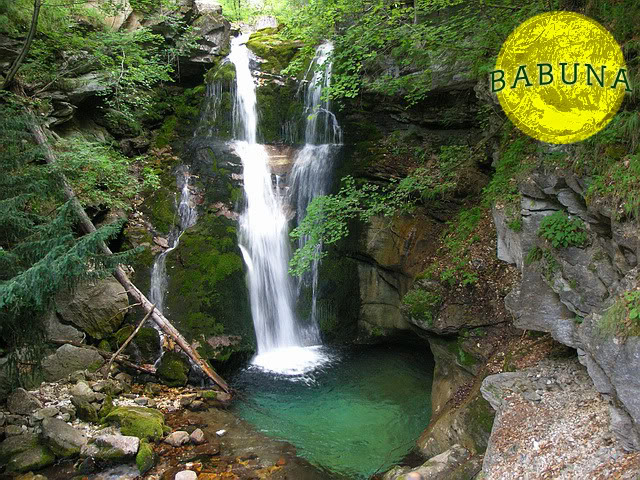 Edited by Max - 23-Jul-2017 at 19:14 |
|||
 |
|||
Max 
Senior Member 

Joined: 07-Jun-2009 Online Status: Offline Posts: 3686 |
 Quote Quote  Reply
#165 Posted: 31-May-2012 at 11:21 Reply
#165 Posted: 31-May-2012 at 11:21 |
||
|
Macedonian Cuisine - what to say except, Nazdravye (to your health) http://tasteofmacedonia.com [1][2][3][4][5], just watch out - overeating is common  although macedonian cuisine is not too heavy in its raw traditional form, it could be said that is rajasic, still have in mind that today meals are prepared as too spicy, fatty and roux, on top all of this extra loaded by the Macedonian Sun, normally that leads to soulful satiation on everybody's satisfaction! although macedonian cuisine is not too heavy in its raw traditional form, it could be said that is rajasic, still have in mind that today meals are prepared as too spicy, fatty and roux, on top all of this extra loaded by the Macedonian Sun, normally that leads to soulful satiation on everybody's satisfaction!
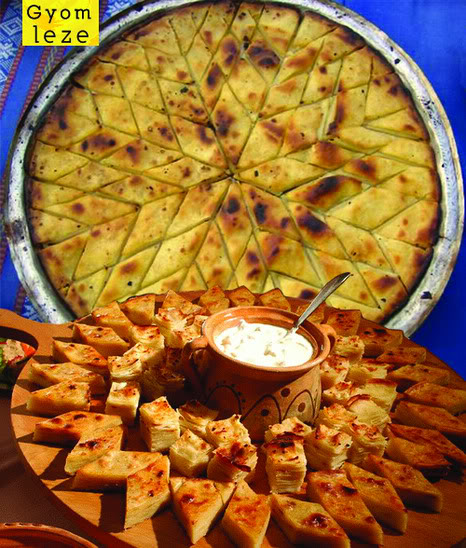
Wines of MAcedonia - http://winesofmacedonia.mk/west-region/ [1] [2][3][4][5]
Edited by Max - 23-Jul-2017 at 19:12 |
|||
 |
|||
Max 
Senior Member 

Joined: 07-Jun-2009 Online Status: Offline Posts: 3686 |
 Quote Quote  Reply
#166 Posted: 30-May-2012 at 20:12 Reply
#166 Posted: 30-May-2012 at 20:12 |
||
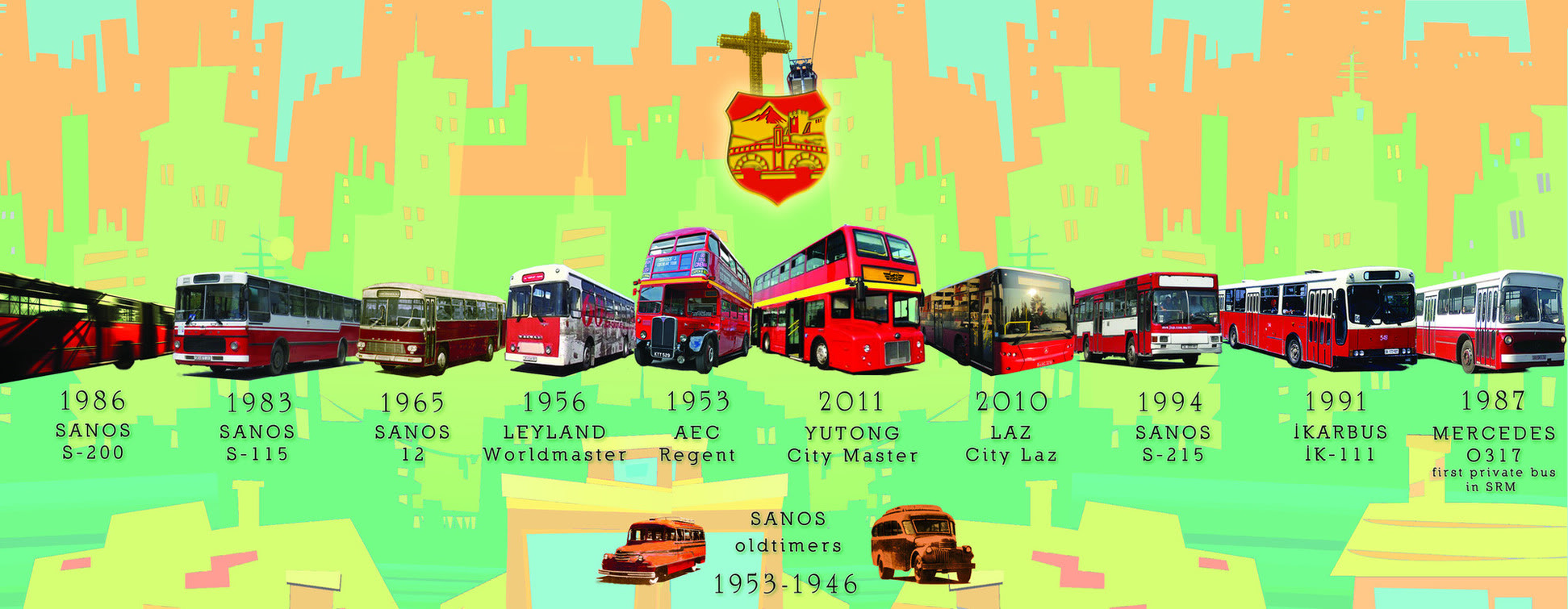
Transport - http://www.lonelyplanet.com/macedonia/transport/getting-around one can choose common options like taxi, bus or train-tram, for now with most reasonable prices in europe, or try some scenic approach [1][2][3] that in the capital is most appropriate with the JSP city-bus fleet of retro double-deckers [1][2][3][4][5] also there is always option for renting some oldtimer for city-cruising especially in small towns or villages (just ask for zastava 750/yugo/101, fiat 126/124/1300, reno 4, citroen dyane, trabant, buba or moskvich) even cheaper option than the standard rent-a-car, but without insurance though  this is outstanding way of sensing the spirit of the place e.g. in Skopje where time didnt stop with '62 flood or '63 earthquake, but stopped in the transitional '90s as it has stood in the next clip from 1993 this is outstanding way of sensing the spirit of the place e.g. in Skopje where time didnt stop with '62 flood or '63 earthquake, but stopped in the transitional '90s as it has stood in the next clip from 1993
http://www.nationaldrivesafe.com/macedonia-driving-summary
http://www.youtube.com/playlist?list=PLD8D1890153D1E042 [1][2] Gas Stations in Skopje - http://www.4sqstat.com/skopje/map?category_id=4bf58dd8d48988d113951735
Edited by Max - 23-Jul-2017 at 19:08 |
|||
 |
|||
Max 
Senior Member 

Joined: 07-Jun-2009 Online Status: Offline Posts: 3686 |
 Quote Quote  Reply
#167 Posted: 27-May-2012 at 23:00 Reply
#167 Posted: 27-May-2012 at 23:00 |
||
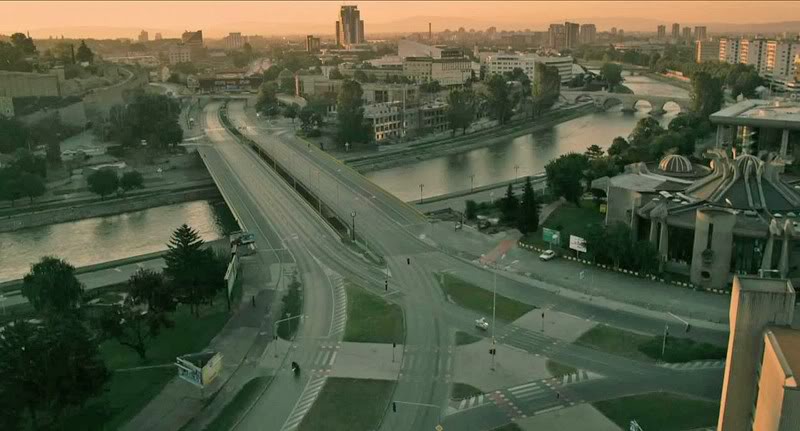

for precise navigation use AdriaRoute or mobile GPS for general Edited by Max - 23-Jul-2017 at 19:05 |
|||
 |
|||
Max 
Senior Member 

Joined: 07-Jun-2009 Online Status: Offline Posts: 3686 |
 Quote Quote  Reply
#168 Posted: 26-May-2012 at 23:00 Reply
#168 Posted: 26-May-2012 at 23:00 |
||
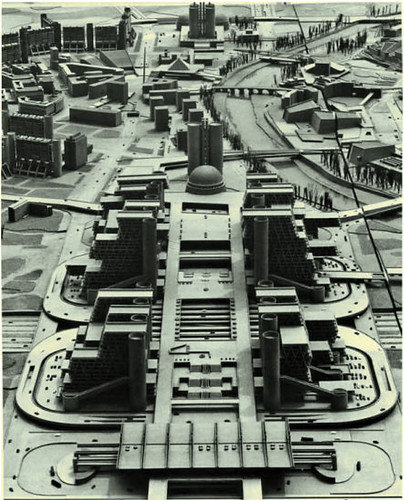
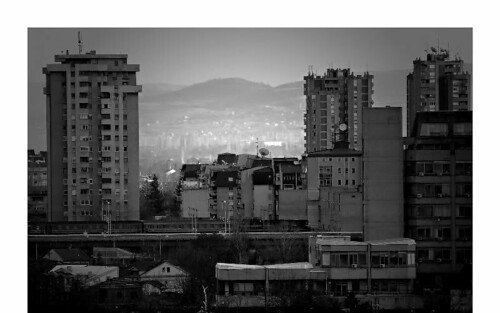
Sleep-dream inception Skopje 1964 - http://www.build.mk/forum/forum_posts.asp?TID=303&PID=106906#106906 [1][2] . meteo, Fortress, mob, Church, central bank . 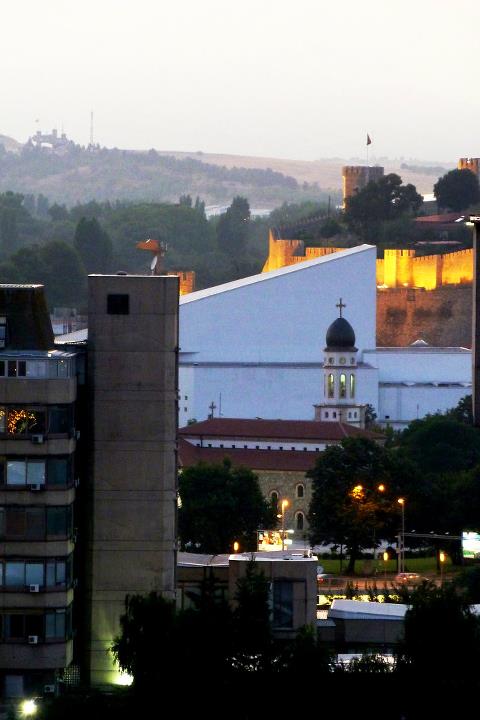
Day-dream culmination Skopje 2014 - http://www.youtube.com/watch?&v=iybmt-iLysU [1][2][3">/u">] constructions started in 2010, scheduled to be completed in 2014 as unconscious facelift-gift for the 50th anniversary of UN engaged city reconstruction after disastrous Skopje earthquake in '63, actually this is impetuous urban regeneration that attempts to put too cheerful layer to the failed brutalization from the past, among other it can be seen as link between all urban layers(old/new/clean/kitsch) that exist in the town... 
Edited by Max - 26-Jul-2017 at 08:09 |
|||
 |
|||
Max 
Senior Member 

Joined: 07-Jun-2009 Online Status: Offline Posts: 3686 |
 Quote Quote  Reply
#169 Posted: 26-May-2012 at 04:26 Reply
#169 Posted: 26-May-2012 at 04:26 |
||
|
http://www.raileurope.com/europe-travel-guide/macedonia/map.html [1]
beside Bitola-Skopje also scenic tour is Skopje-Kicevo in the past til Ohrid (maybe in future til and around Ohrid), hopefully with Steam Train on it! in 2015 is scheduled for completion the route from Skopye to Sofiya, one more to be added to the railway scenery in the country... and for now with unique expirience reserved still for eastern europe you can open windows! 
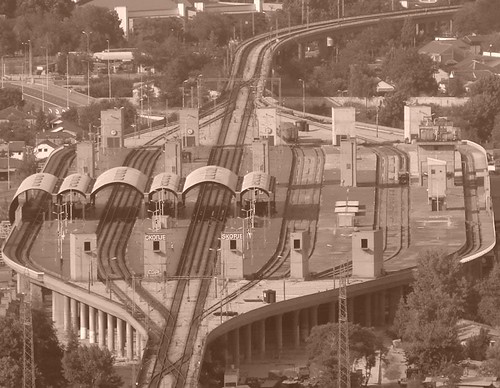
Edited by Max - 23-Jul-2017 at 18:46 |
|||
 |
|||
Max 
Senior Member 

Joined: 07-Jun-2009 Online Status: Offline Posts: 3686 |
 Quote Quote  Reply
#170 Posted: 24-May-2012 at 23:00 Reply
#170 Posted: 24-May-2012 at 23:00 |
||

because at the same time elusive, covert and obvious crossroad, one can easily find way in or way out of Macedonia, only irony is that today routes are slowed down by nowadays borders and strife funding of pan-european corridors VIII which is still local and X that is completed but needs improvements in railway part, hopefully to rise train travel time til 2020 to 180km/h except modern roads, we are also part of ancient paths like roman Via Egnatia http://www.gammathetaupsilon.org/the-geographical-bulletin/1970s/volume05/article3.pdf that was older retraced route [1] http://www.viaegnatiafoundation.eu/ [1][2] Edited by Max - 02-Jun-2012 at 15:08 |
|||
 |
|||
Max 
Senior Member 

Joined: 07-Jun-2009 Online Status: Offline Posts: 3686 |
 Quote Quote  Reply
#171 Posted: 24-May-2012 at 13:14 Reply
#171 Posted: 24-May-2012 at 13:14 |
||
|
Enlightening Simple portrait from jAnna - http://www.goldenline.pl/forum/379752/macedonia http://www.macedonialovesyou.com Strategies to bring EU close to the Macedonia - http://www.youtube.com/watch?v=NdLjbT-h9pw&t=28s Edited by Max - 03-Oct-2013 at 19:56 |
|||
 |
|||
Max 
Senior Member 

Joined: 07-Jun-2009 Online Status: Offline Posts: 3686 |
 Quote Quote  Reply
#172 Posted: 20-May-2012 at 23:21 Reply
#172 Posted: 20-May-2012 at 23:21 |
||
|
I am glad that there is common page like SEEH above, coz only culture can dismantle the borders in south east europe specially mental ones like pampered childish possessivity of history or culture, only sharing can unveil true sound and colors of this region for start at least virtually and tomorrow maybe in united europe actually, proccess that is pushed by artists like Todor Proeski [1][2][3] who had succeed in unifying young people from ex-yu republics in today's western balkan countries after last balkan wars in 90's
even though new democracy Macedonia is pioneer in constructive legalism i.e. officially in our constitution there are no minoryties only nations, not one or two everybody are recognized as nation, refreshing move in mostly egocentric europe that is considered as future model for multiculturalism in eu, also e.g. Skopje is only city in europe where christians and muslims still live together side by side accepting own differences like oriental music assemble that eats burek in the morning and baklava in the evening, normally turlitava and shopska for lunch... so our nationalism ends with loving our own(and common) rather than imposing it to others, but politics and media twisted this to pride instead of love while struggling to won some ephemeral elections thus ruining for ages builted multi-ethnic coexistence
Edited by Max - 17-Apr-2018 at 00:41 |
|||
 |
|||
Max 
Senior Member 

Joined: 07-Jun-2009 Online Status: Offline Posts: 3686 |
 Quote Quote  Reply
#173 Posted: 19-May-2012 at 16:51 Reply
#173 Posted: 19-May-2012 at 16:51 |
||
SEEHN - http://www.seeheritage.org/macedonia/history.html - http://www.see-heritage-download.org/Ohrid_World_Heritage_Sites_EN.pdf - http://www.see-heritage-download.org/Ottoman_Monuments_EN.pdf - http://www.see-heritage-download.org/Archaeological_sites_EN.pdf
Edited by Max - 09-Oct-2014 at 19:14 |
|||
 |
|||
Max 
Senior Member 

Joined: 07-Jun-2009 Online Status: Offline Posts: 3686 |
 Quote Quote  Reply
#174 Posted: 19-May-2012 at 11:21 Reply
#174 Posted: 19-May-2012 at 11:21 |
||
|
from romantic period, most famous poems in Macedonia are Serdarot [1] epic poem from Grigor Prlicev and T'ga Za Yug [1] quoted in the first post as nostalgic poem from Konstantin Miladinov who were inspiration for many poets after their time http://www.pen.org.mk/en/publications/anthology-of-macedonian-pen-poets- most of them modernists like Matea Matevski which poem is presented below, joined after by the song Zajdi Zajdi as rearranged traditional poem, just to point out how deep "can go" local melorecitation... 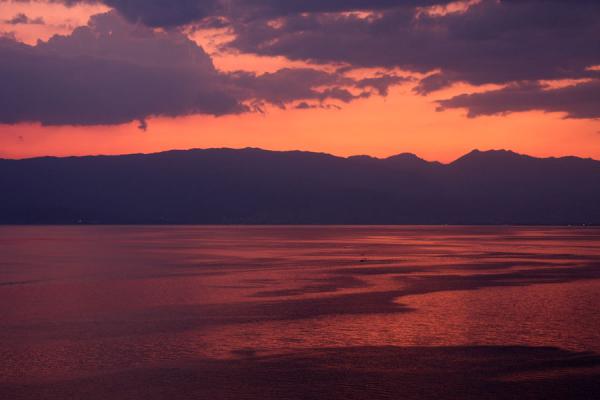
|
|||
 |
|||
Max 
Senior Member 

Joined: 07-Jun-2009 Online Status: Offline Posts: 3686 |
 Quote Quote  Reply
#175 Posted: 18-May-2012 at 20:12 Reply
#175 Posted: 18-May-2012 at 20:12 |
||
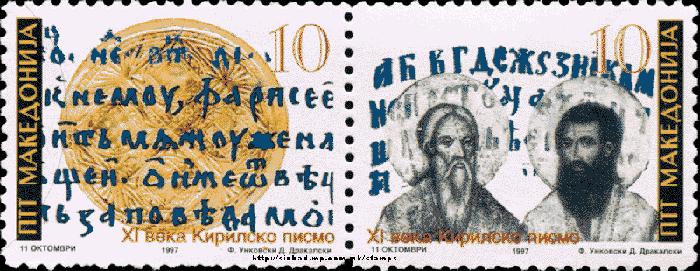
all folk songs from this place definitely owing gratitude to Slavic Saints Cyril and Methodius for compiling the Glagolitic alphabet that with further development by their disciples it became the Cyrillic alphabet, they start to write on mother tongue of own native people that lived in Macedonia and spreading the Word of God through the world to tribes that had same or similar roots either by filiation, culture or beliefs [1][2][3] by them we are named Slaveni (meaning famous from proto-indo-european word kléues meaning fame/glory) and Sloveni (those who have/know the Word) [1], we praise their efforts on church and national feast every 24th of may, giving them a credit for their sacrifice to literate and inchurch people in Macedonia and around the orthodox world... in last post is given appreciation to traditional songs of unnamed genius, for that merit goes to folk-collectors & mythographers and their efforts for collecting and preserving the folk heritage as it was Marko Cepenkov [1] whose stories beside in written http://www.mling.ru/etnolingvistika/makedonia/folktales.pdf today are passed also in visual form http://vimeo.com/prikazni except folk tellers we have many famous and acknowledged writers and poets from middle ages [1][2][3] e.g. Saint Clement [1] and Saint Naum [1] from Ohrid, and many other up until today... over the centuries many writers had used dialects that today are forgotten although our language still has plenty of patois [1] that in present republic of Macedonia had been and still are used in the songs and literature... this "undialectization" has started notably after Cyrillic alphabet was standardized in 1944 [1][2] but similar process surly had have been done even in the beginning when Slavic Apostles had took south macedonian dialect from Salonica as base for codification of the language and start passing it to north [1][2][3] Edited by Max - 26-Jul-2017 at 08:04 |
|||
 |
|||
Max 
Senior Member 

Joined: 07-Jun-2009 Online Status: Offline Posts: 3686 |
 Quote Quote  Reply
#176 Posted: 17-May-2012 at 20:12 Reply
#176 Posted: 17-May-2012 at 20:12 |
||
|
many dances has own complementary song e.g. with Maskoto Oro goes along the song Filka Moma [1], Kostursko Oro with Dodek je Moma [1], Arap Oro goes along Zajko Kokorajko [1][2][3][4][5 etc., this paralel is flexible because for one dance there can be different songs depending on region of origin, or ussualy with most of the songs is danced Lesnoto/Pravoto Oro (EasyOne/Direct or StraightOne) as simple everyday dance... playing, dancing and singing are three forces in the process of creating folklore masterpiece, but their tuning-fork sources are also as important as they are, such are culture, geography and cussine, mostly responsible for longevity of our tradition! all of these through history were bonding macedonian ethnic code in way that today cannot be dismantle nor by wars, separations or politics, as long as there is will for living the tradition instead of putting it in museums, at least music should stay pure and unforgotten if everything else evaporate, and even no one it'll be capable to play and dance at least singing will remain live and same - coz as features of the soul word is endless and voice is purest emanation of eternity famous macedonian songs are partly listed on following links [1][2][3][4][5] and next video is mix of 5 songs from 3 main geographical regions in Macedonia among folklore singers in Macedonia respectfull status have female voices like Vaska Ilieva, Anka Gieva, Vanja Lazarova, Mirvet Belovska, Violeta Tomovska, Kostadinka Palazova, Petranka Kostadinova and nonetheless famous male warblers such Nikola Badev, Aleksandar Sarievski, Kiril Mancevski, Mirko Mitrevski, Zoran Georgiev, Trpe Cerepovski, Naum Petrevski etc. all of them performing traditional songs [1][2] but also new adaptations or even own compositions such as famous songs of Jonce Hristovski - Makedonsko Devojce, Zasvirete mi Calgii i Ako Umram il Zaginam and among new performers outstands interpretations of Elena Hristova, Todor Proevski, Vera Milosevska, Saso Gigov, Dobrila Graseska, Bobi Andonov, Aleksandra Mangarovska etc. culture is idea of cosmopolitism best expressed by music as universal languge, here people were singing all the time, in good or bad times singing was substitute for laughing and crying, singing was and still is best way to praise God and life and to stay in touch with creativity, here singing was and still is way of cheerfull comunication instead of talking... as cosequence in this country songs are with plenty of different moods, in same time fairly simple but enlightening wise, even today e.g. traditional limbo song Naseto Selo [1][2 which in few verses talks about boredom, carelessness and forgetfulness important to notice is that as with Orthodox Chrurch Singing songs are very alike or similar in neighboring contries because originate from same ethnological substrate overlaping around Macedonia as center of that cultural substratum, except that here in the core music was perfected in specific way or better to say practiced in rather different circumstances! it is well known that was challenging to stay calm in times like otoman feudalism or balkan romantism(second one still lasts) and here that was achieved only by chanalising all fears and tears through songs, singing was like easy burden carrier but also cultural strugal for freedom, similar as in modern times was reggae in Jamaica, just that in Macedonia every house had have own Power Singer instead of gramophone 
also among cultural richness of our country is ethnic musical diversity and can be easly noticed by Roma people and their dance Chochek and singers such Esma Redzepova [1] or Muarem Serbezovski and brass performers like Ferus Mustafov [1], Agusevi, Cerkezi or Kocani Orchestra but also chalgija performers as Marem Aliev Edited by Max - 06-Nov-2022 at 23:45 |
|||
 |
|||
Max 
Senior Member 

Joined: 07-Jun-2009 Online Status: Offline Posts: 3686 |
 Quote Quote  Reply
#177 Posted: 16-May-2012 at 19:11 Reply
#177 Posted: 16-May-2012 at 19:11 |
||

Oro - Traditional Dance http://www.europafilmtreasures.eu/PY/263/see-the-film-rhythm_and_sound [1]
Macedonian dances are exotic by flow and exceptional by steps supported with rhythms of Macedonian music [1][2][3][4][5] except on weddings and public meetings, dances today are mostly performed as cultural shows which are slowly but surly moving the traditional dance oro to museum artifact instead of every day act, but in times of aggressive glottalization one can be glad that still there is way to learn and experience Macedonian Ora's which are "cultivated" by many dance ensembles in the country among whom Tanec is oldest, most prominent and rewarded [1][2][3][4][5] famous men dances Cucuk Oro [1][2][3][4][5] Kopacko Oro [1][2][3] Maskoto Oro [1][2][3][4][5] south macedonian dance counterpart to Teskoto from north Rusalisko Oro [1][2][3][4][5] Oro Cifte Camce [1][2][3] Oro Krstach [1][2][3][4][5] Osogovsko Oro [1][2[3][4][5] Teskoto Oro [1][2][3] famous mingled dances Pirin Flower [1][2] - (3)(4) Potrcano Oro [1][2][3]Sitna Lisa [1][2][3] Zaramo [1][2][3][4][5][6][7] famous woman dances Krsteno Oro [1][2][3][4][5] Baptized Dance Kucano Oro [1][2][3][4][5] Wedding Dance also known as Pusteno Oro or Bairace or Zensko Berance [1][2][3] Mariovska Tresenica [1][2][3][4][5] Tremble Dance inspired by customs that women performed on Clean Monday before the Great Lent Nevestinsko Oro [1][2][3][4][5] Bridal Dance known as Zensko Chamche womans counterpart to Teskoto Paidusko Oro [1][2][3] Potrculka [1][2][3] Svekrvino Oro [1][2][3] Zensko Oro Krivoto [1][2][3] surely exaggerate in past decades folk ensembles repertoire has been rearranged with new choreographies that are also very impressive but in my opinion they are altering traditional dance in way as modern instruments do that to folklore music, sadly 80% of all choreographic stagings in Macedonia originate from Tanec, such are Komitsko Oro [1][2][3] basic steps from Shtip region Kalajdziskko Oro [1][2][3][4][5] basic steps from Veles dances Gyurgiovdensko Oro [1][2][3] Easter Dances Poselje [1][2][3] basic steps from Tetovo region
Edited by Max - 23-Jul-2017 at 18:40 |
|||
 |
|||
Max 
Senior Member 

Joined: 07-Jun-2009 Online Status: Offline Posts: 3686 |
 Quote Quote  Reply
#178 Posted: 08-May-2012 at 00:41 Reply
#178 Posted: 08-May-2012 at 00:41 |
||
|
nowadays among best performers of our musical echoes are Orchestra Pece Atanasovski [1][2][3], Stefce Stojkovski Orchestra [1][2][3][4][5], Kaldrma [1][2][3][4][5] and many other... but also there are etno-classic crossover interpreters like Dragan Dautovski [1], Anastasia [1], Synthesis [1], Baklava [1], Monistra [1], Ljubojna [1], Petar Rendzov [1] all in all dont miss to listen our folklore! best place to be heard and seen is every year in may or june at Dolneni Festival http://www.culture.in.mk/story.asp?id=7075&rub=55 [1][2] and if not live on festivals, squares, concerts or in gardens, parks or mountains, then ask for any recording that your host may have and enjoy while visiting the country! but have in mind that our traditional music later has became affected by XX c. instruments which are heavly changing the original sound, so look up rather for traditional instrument orchestras instead of electric or eclectic like most of the numbered on following link [1] although if songs are played by pros still sounds quite good [1][2] but not as pure as traditional interpretations [3][4][5] Edited by Max - 18-May-2012 at 11:56 |
|||
 |
|||
Max 
Senior Member 

Joined: 07-Jun-2009 Online Status: Offline Posts: 3686 |
 Quote Quote  Reply
#179 Posted: 07-May-2012 at 22:03 Reply
#179 Posted: 07-May-2012 at 22:03 |
||
|
In this place musical tradition has long roots, as long as human civilization which is confirmed by discovery of neolithic globular flute in village Mramor [1][2][3][4][5]
This musical tradition has grown through ages cultivating and sophisticating its musical expression until has reached own culmination in the middle ages i.e. own classicism, and this days was best represented to the world by the virtuous Pece Atanasovski [1][2][3] The bagpiper Pece Atanasovski was winner at the World Festival in Sicily in 1968, in a competition of 1,800 bag-pipers from around the world. Atanasovski has also won first prizes in 16 other international festivals (Llangollen, Dijon, Nancy, Oslo, Leyden, Bracciano), and has lectured on original Macedonian folklore at over 90 universities around the world. One of his own masterpieces composed of macedonian musical motifs is Janino Oro [1][2][3][4][5] Macedonian Traditional Music is famous by its cheerful sounds and complex rhythms followed by improvised melody(called ezgija) and syncopated beats [1][2] for what we are known as true and native jazzers, improvising long before jazz was born as we know it today, and although musical improvisation around is not so uncommon, in the past in our yard became standard of everyday life existence because as people we had to be very adaptive to our geo-crossroad position but in same time standing firmly on our roots... notable present-day representative of macedonian music between jazzers was Tale Ognenovski [1][2][3] Edited by Max - 15-Mar-2017 at 15:27 |
|||
 |
|||
Max 
Senior Member 

Joined: 07-Jun-2009 Online Status: Offline Posts: 3686 |
 Quote Quote  Reply
#180 Posted: 24-Apr-2012 at 15:12 Reply
#180 Posted: 24-Apr-2012 at 15:12 |
||
Another interesting genre in the Macedonian musical culture is Chalgiya. In Macedonia, calgiya present an ensemble which employs instruments of persian-arabian origin tho as such earlier largely influenced by its byzantine neighbors, anyway in middle ages it became some sort universal balkan pop-music, variation of the traditional music spread through oriental ensembles that flourished mostly in the larger towns. today Calgiya is a typical old-town music i.e. "starogradska muzika", already having long tradition in towns, notably Veles, Ohrid, Bitola and Salonika... As style chalgiya carries strong oriental influence, as reflected in the playing style, however in the course of time, the calgiya music in Macedonia developed its specific tonal dialect and expression -[5][5][5][5][5], which later got further modifications eg. in Egean Macedonia where is combined with brass orchestras -[5], or today as crossover with traditional instruments -[5] Chalgiya ensembles were and are welcomed at weddings, religious celebration rituals (Christmas, Epiphany, Easter etc), holidays and fairs etc. Edited by Max - 15-Mar-2017 at 14:56 |
|||
 |
|||
Post Reply 
|
Page <1 78910> |
| Forum Jump | Forum Permissions  You cannot post new topics in this forum You cannot reply to topics in this forum You cannot delete your posts in this forum You cannot edit your posts in this forum You cannot create polls in this forum You cannot vote in polls in this forum |